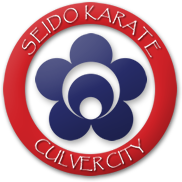What We Teach
Children’s Program
We teach karate technique, of course. Every class contains modules for kicking, punching and blocking. We also include calisthenics (burpees, push-ups, crunches, jumping and so on) in every class. As a licensed physical therapist, Ted Pastrick accesses current literature in the areas of exercise, exercise physiology and motor learning to augment, wherever possible, the traditional training practices of formal Japanese Karate-do.
Undergirding the physical training, however, is the Seido Philosophy summed up by the Japanese expression Nana korobi ya oki. This phrase can be translated as “non-quitting spirit.” Literally, it means “Fall down seven times, get up seven times and even once more.”
Ted has been informed by the developments in the educational field over the past two decades, too, many of which mirror or work indirectly with the non-quitting philosophy of Seido Karate-do. The work of Joanne Jacobs (Our School: The Inspiring Story of Two Teachers, One Big Idea and The Charter School that Beat the Odds), Angela Duckworth (Grit: The Power of Passion of Perseverance), Carol Dweck (Mindset: The New Psychology of Success) and, notably, Anders Ericsson (Peak: Secrets from the New Science of Expertise) form a strong contemporary adjunct to the traditional approach used in Seido.
The role of Executive Function in a child’s development is, however, the over-arching concept that Ted brings to the instructional approach used in the Children’s Program at the Seido Dojo in Culver City. As explained in this extremely informative article (PDF) Harvard-Parenting-Resource, Executive Function is a skill set that engages and develops working memory, inhibitory control and cognitive flexibility. These skills continue to develop throughout adolescence and create a platform for positive interaction with peers and adults and a pathway to success in whatever field of endeavor the young person chooses.
Below are links to articles related to the topics discussed above.
https://sharpbrains.com/blog/2008/02/17/the-first-step-for-academic-success-is-failure/
“Students are praised for making progress, even if that means moving from an F to an F+. But they’re reminded again and again that they need to pass with a C or better to qualify for a public university.”
http://www.nytimes.com/2008/05/04/business/04unbox.html
“(Ms. Ryan) recommends practicing a Japanese technique called kaizen, which calls for tiny, continuous improvement. Whenever we initiate change, even a positive one, we activate fear in our emotional brain…The small steps in kaizen don’t set off the flight-or-fight autonomic response, but rather keep us in the thinking brain, where we have access to our creativity and playfulness.”
https://wimse.fsu.edu/media/expert-mind.pdf
“Ericsson argues that what matters is not experience per se but “effortful study,” which entails continually tackling challenges that lie just beyond one’s competence…. Even a novice engages in effortful study at first, which is why beginners so often improve rapidly in playing golf, say, or in driving a car. But having reached acceptable performance…most people relax. In contrast, experts-in-training keep the lid of their mind’s box open all the time, so they can inspect, criticize and augment its contents and thereby approach the standard set by leaders in their fields.”
Adult Program
Kaicho’s books (links to Amazon):
Karate Technique and Spirit
Karate Kyohan by Tadashi Nakamura
Human Face of Karate
One Day, One Lifetime
